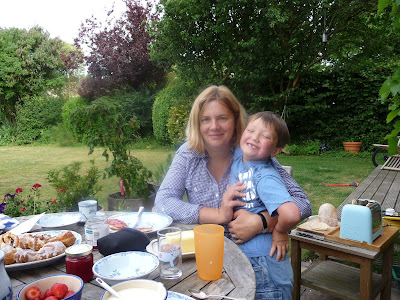 |
| I think this is my first photograph of Max taken in the New Forest in Jan 08. On his right is his mother Christine and on his left is a close family friend Caroline |
 |
| Max with his auntie Dolly in Dorset in August 2015 |
 |
| Max - with Mummy in Salisbury summer 2008 |
 |
| Max in a relaxed mood in France in summer 2010 aged 9 |
We have received a great deal of social welfare support for Max and were lucky to find a wonderful school in our area which provided exactly the type of pastoral care and discipline Max needed. His teachers understood Max's condition and supported him patiently and consistently. When we attended his leaving ceremony there in July, my wife and I wept with gratitude. Max has also benefited from weekly therapeutic sessions and we all as a family have been able to discuss the highs and lows of life together. We were always advised to ensure that every naughty deed has a consequence, but when one's armoury of sanctions has been exhausted or become meaningless, what can you do? However, at the end of day and when all the helpers have gone, we've had no alternative other than to just get on with life as best as possible. On the whole I think that we've done really well, but we are far from perfect and Max is getting bigger and stronger and, however patient and de-escalatory we try to be, the danger of physical contest is increasing.
 |
| Max and Puckle aged 2 in Dorset in May 2015 |
Postscript: this piece has been written with Max's kind permission and he is happy with its content - just in case you're wondering.













